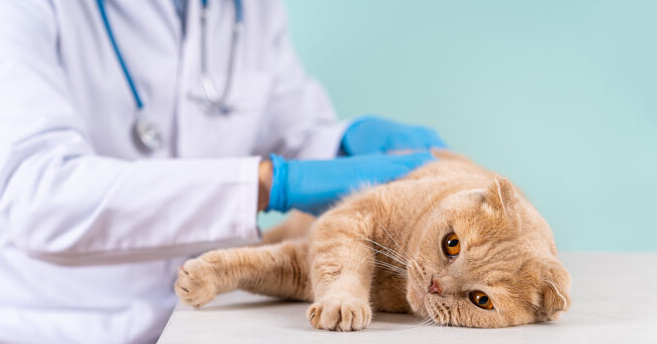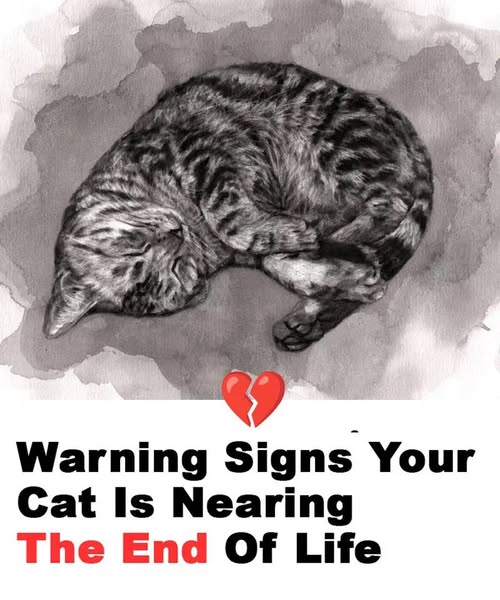4. Breathing patterns change
As a cat is seriously ill or nearing the end of its life, its breathing may be noticeably altered.
Certain cats start to breathe more shallowly, while others may develop a more irregular breathing rhythm. This is often due to the body weakening and organs starting to function more slowly.
5. Losing interest in their surroundings
The cat may become apathetic and less interested in the surroundings and people around it.
An otherwise social and playful cat may begin to withdraw, show less response to familiar voices or touch, and generally seem distant.
6. Coat becomes dull and woolly
This is a clear sign. The coat, which was previously smooth and well-groomed, may become dull, woolly and uneven.
This may be due to the fact that the cat no longer has the energy or energy to groom itself as thoroughly as before.
7. Problems with movement and balance
As cats get older or sick, they may experience problems with movement and balance.
Illness and general weakness can make it challenging for your cat to jump up to their favorite spot, climb, or even walk short distances.
8. Behavioral changes

Some cats become more reserved and withdrawn. Meanwhile, other cats may become more contact-seeking and dependent on their owner’s proximity.
They may spend more time on your lap, follow you around, or seek comfort through cuddles and touch. This increased attachment may be a cat’s way of seeking reassurance when they feel vulnerable.
9. Nausea or vomiting
When a cat nears the end of its life, it may experience digestive problems such as nausea and vomiting.
Some cats may show signs of discomfort by swallowing repeatedly, drooling more than usual, or avoiding food and water altogether.
10. Digestive problems
The digestive system may begin to malfunction, which can cause either diarrhea or constipation.
Whether your cat is suffering from constipation or diarrhea , it’s important to focus on comfort and well-being. Ensure your cat has access to clean water, a quiet environment, and a place where they feel safe.
11. Changes in body temperature
Depending on the cat’s health, it can have both a low temperature and a high fever. The cat’s temperature should be between 38 and 39.3 degrees.
Consult a veterinarian
As an owner, seeing your cat during this phase can be difficult, but the most important thing is to provide them with security and comfort. Make sure your cat has a quiet and comfortable place to rest, and be there for them when they need it.
If you are not sure whether your cat is in pain or needs relief, it may be a good idea to consult a veterinarian. Understanding what is happening in your cat’s final stages of life can make it easier to give them the care and love they deserve.
If your cat shows any of these signs, it’s better to contact a veterinarian as soon as possible. Your pet’s comfort and well-being should always come first.

